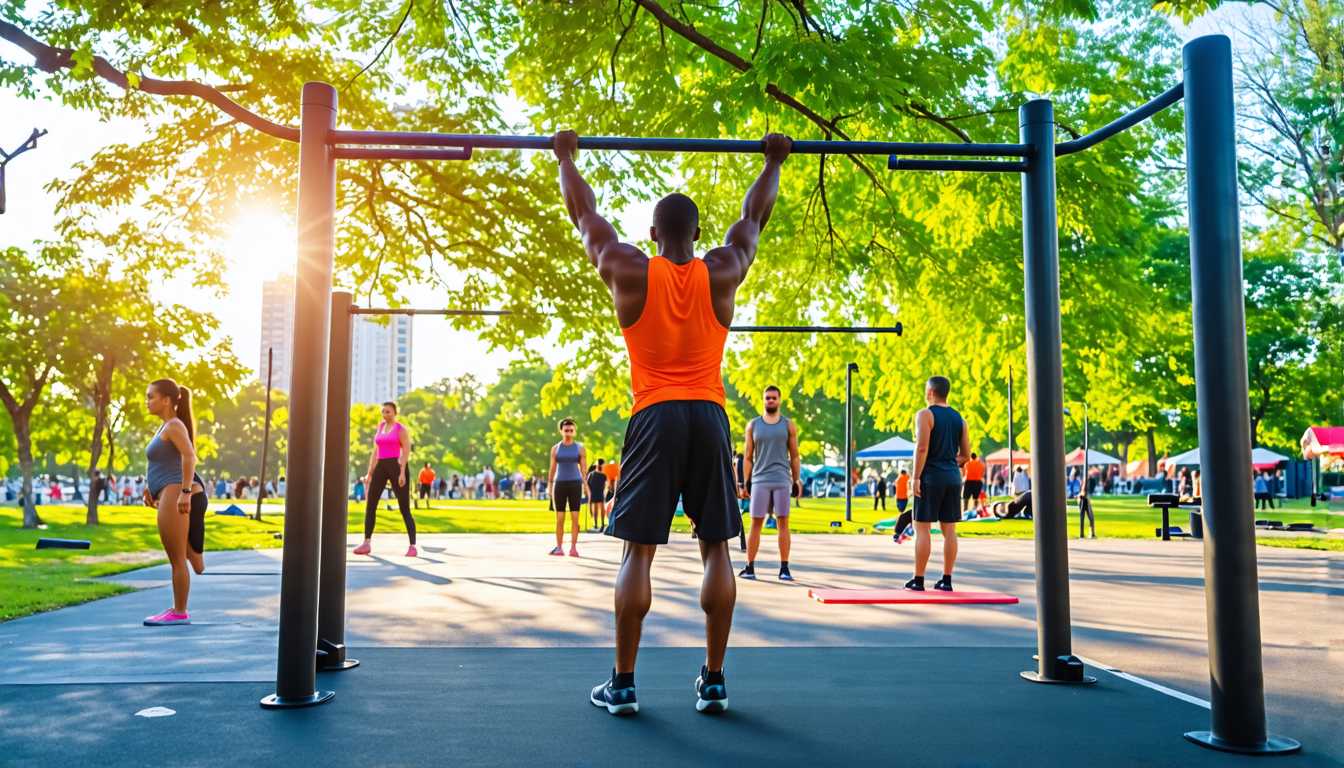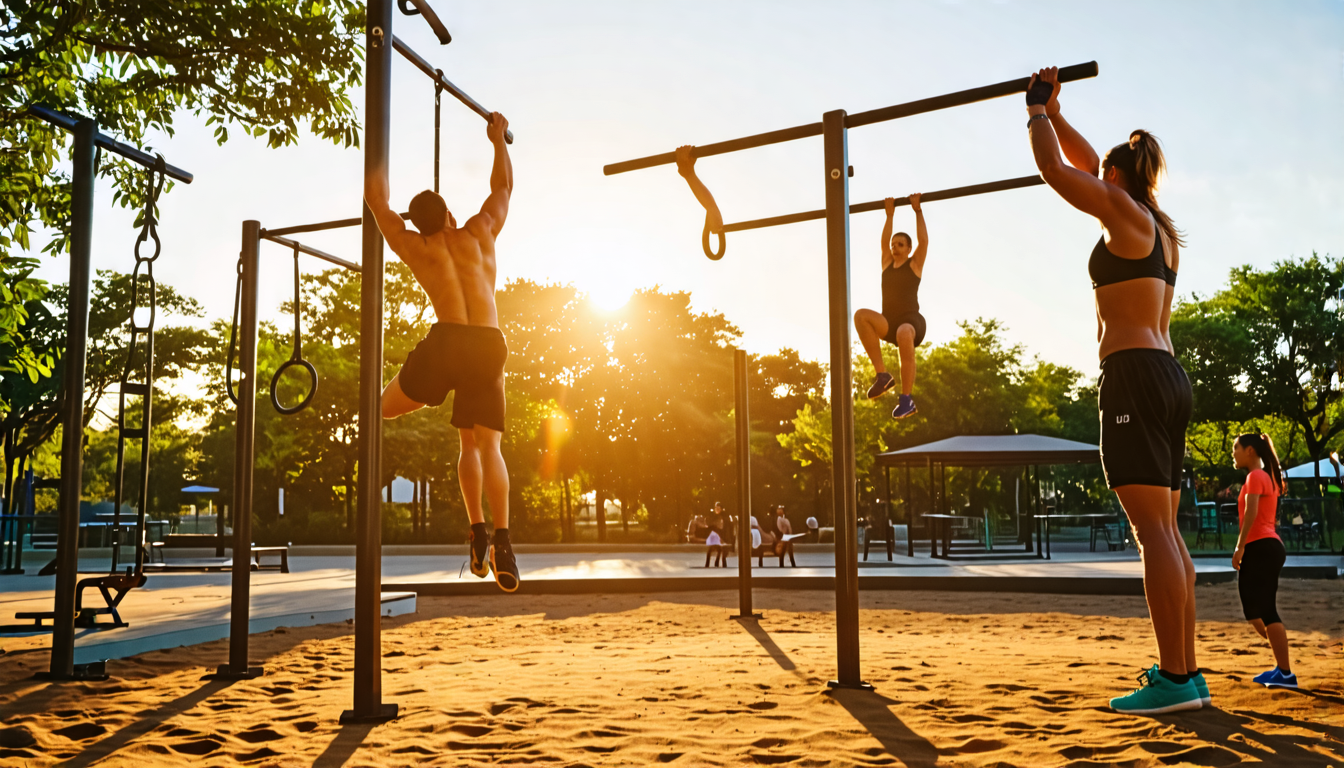If you’re looking to elevate your home fitness bar workouts and maximize your results, you’re on the right track. As more individuals gravitate toward home fitness solutions for convenience and personalization, the fitness bar has emerged as a versatile tool in these setups. However, to continue reaping the benefits and avoid hitting a plateau, it’s crucial to infuse your routine with added challenges. By incorporating advanced techniques and movements, you not only engage more muscle groups but also push your limits further than before. Think progressive overload methods like adding resistance bands or weights, which can transform a standard fitness bar routine into a powerhouse of muscle engagement and growth. Throw in complex moves such as muscle-ups or explosive pull-ups, and you’ll see improvements in both strength and coordination, provided you maintain proper form for optimal safety and effectiveness.
In addition to ramping up the complexity, varying your workout intensity and structure plays a key role in challenging your body. High-intensity interval training (HIIT) with your fitness bar is a strategy that not only increases your cardiovascular challenge but also injects energy and excitement into your workouts through intense bursts of activity. Tweaking workout variables like tempo, grip variations, and rest intervals can keep your muscles on their toes, preventing the dreaded fitness plateau. By mixing up these workout styles in your home fitness bar routine, you ensure continuous progress and keep your body guessing, ultimately leading to a more engaging and effective home workout experience.
To elevate your home fitness bar workouts and make them more challenging, it is essential to incorporate advanced techniques and movements. This approach will not only boost the intensity of your routines but also lead to significant improvements in both strength and overall muscle engagement.
Explore Progressive Overload Methods
One of the foundational principles of increasing workout difficulty is progressive overload. This concept involves gradually increasing the stress placed on your muscles during exercise, which can be achieved in several ways with a fitness bar.
Add Resistance Bands
Incorporating resistance bands into your fitness bar workouts is an effective way to enhance difficulty. These bands add extra resistance to your movements, requiring your muscles to work harder. For example, attaching resistance bands to the fitness bar increases the intensity of standard pull-ups or chin-ups by making the upward phase of the exercise more challenging. By using bands with varying levels of resistance, you can customize the level of difficulty to match your fitness level and progressively build strength over time.
Increase Weights
Another method of implementing progressive overload is by adding weights. You can use a weighted vest or attach weights to your waist when performing exercises like pull-ups or dips on the fitness bar. This additional weight increases the load on your muscles, enhancing strength gain. When incorporating weights, it is crucial to start with a manageable amount to prevent injury and gradually increase the load as you grow stronger and more confident in your movements.
Introduce Complex Moves
To further challenge your fitness bar workout, consider incorporating complex movements that require advanced levels of strength and coordination. These exercises demand more from your body, promoting muscle growth and improving performance.
Muscle-Ups
Muscle-ups are a complex hybrid of a pull-up and a dip, requiring a high level of upper body strength and technique. To perform a muscle-up, start from a dead hang on the fitness bar, pull yourself up explosively, and transition smoothly over the bar to press your chest above it. This move engages multiple muscle groups, including your shoulders, back, and core. Mastering muscle-ups can take time, but breaking it down into pull-up and dip components and practicing the transition separately can accelerate progress.
Explosive Pull-Ups
For a more dynamic variation of the traditional pull-up, try explosive pull-ups. This movement involves pulling yourself up to the bar with maximum force and speed, ideally high enough so that your chest meets or even clears the bar. Explosive pull-ups develop fast-twitch muscle fibers, which are critical for power and speed. Incorporating these into your routine can significantly improve your overall athletic performance.
Single-Arm Exercises
Taking your fitness bar workout to the next level can also involve single-arm exercises. Single-arm pull-ups, for instance, are particularly challenging due to the greater demand on balance and strength. Start by practicing negatives, controlling your descent with one arm, or using assistance, such as a band or your opposite arm, to build up strength gradually. Single-arm exercises also help address muscular imbalances, as each side of the body works independently, ensuring balanced development.
Prioritizing proper form and safety is paramount when attempting these advanced techniques and movements. Ensuring correct form not only prevents injuries but also maximizes the effectiveness of each exercise, allowing you to fully benefit from your fitness bar workouts in the comfort of your home gym.

Vary Your Workout Intensity and Structure
Adding variety to your fitness bar workouts not only keeps routines exciting but also fosters continual growth and adaptation. To effectively make these workouts more challenging, consider varying your workout intensity and structure with specific techniques that target different muscle groups and energy systems.
Implement High-Intensity Interval Training (HIIT) with the Fitness Bar
High-Intensity Interval Training, commonly known as HIIT, is an excellent way to maximize your cardiovascular and muscular endurance in a short amount of time. When integrated with a fitness bar, HIIT workouts can significantly elevate your home fitness routine by combining strength and cardio elements. The key to HIIT is to alternate between periods of intense, all-out effort and shorter recovery periods.
Start with a simple HIIT structure: Perform an intense exercise, such as pull-ups or chin-ups, for 30 seconds, followed by 15 seconds of rest. Repeat this cycle for 10-15 minutes. As you progress, try adding additional movements like kneeling muscle-ups or explosive bar rows during your intense phases to ensure maximum engagement.
One of the major benefits of HIIT is its ability to increase metabolic rate, even after the workout is completed, making it an effective tool for those looking to burn calories and shed fat as part of their home fitness routine. Moreover, the intense nature of HIIT challenges your body’s aerobic and anaerobic systems, leading to enhanced fitness levels and greater endurance over time.
Adjust Workout Variables
To prevent the boredom and stagnation often associated with unchanging workout routines, adjust key variables such as tempo, grip variations, and rest intervals. These modifications can create a different stimulus for your muscles, promoting growth and adaptation.
Tempo
Altering the speed or tempo of your movements can drastically change the difficulty of an exercise. Try performing ultra-slow pull-ups, lowering yourself from the bar over a count of five to ten seconds, to increase time under tension and muscle activation. Alternatively, go for explosive movements to improve power and speed. This variance in tempo not only helps in muscle growth but also aids in the development of different strength attributes.
Grip Variations
Utilizing various grip positions during bar exercises significantly impacts which muscle groups are engaged and how intensely they are worked. Standard overhand grips work the lats, while underhand grips shift emphasis to the biceps. Mixed grips, or using towels draped over the bar, introduce a new challenge by increasing grip strength demands. Regularly switching grips can help target muscles differently, preventing adaptation and promoting balanced development.
Rest Intervals
Adjusting rest periods between sets is an important aspect of varying workout intensity. Shortening the rest time forces your muscles to work harder aerobically, improving endurance and efficiency, while longer rest allows for heavy lifting and maximal strength gains. Experiment with different rest strategies, like supersetting exercises or descending rest intervals, to find the balance that best matches your fitness goals.
Overall, mixing up the intensity and structure of your fitness bar workouts not only makes them more challenging but also ensures comprehensive muscle engagement and cardiovascular improvement. These strategies can stave off plateaus and continue to push your limits, translating to better results in your home fitness endeavors.
To make fitness bar workouts more challenging and effective, it is essential to integrate advanced techniques and movements, and vary workout intensity and structure. By exploring progressive overload, you can add elements such as resistance bands or weights to your routines, increasing difficulty and enhancing muscle engagement. Incorporating complex moves like muscle-ups and explosive pull-ups adds a layer of strength and coordination development, but always prioritize maintaining proper form to ensure safety and maximize results.
Additionally, varying the intensity and structure of your workouts keeps them dynamic and prevents stagnation. High-intensity interval training (HIIT) with the fitness bar presents an excellent method to boost cardiovascular fitness by alternating between powerful bursts of exercises and recovery periods. Furthermore, adjusting workout variables like tempo, grip variations, and rest intervals creates an element of surprise for your muscles, encouraging constant adaptation and progress. This continuous challenge not only builds physical strength and endurance but also revitalizes motivation and prevents fitness plateaus.
Integrating these strategies into your fitness bar workouts at home aligns perfectly with optimizing home fitness by transforming your workout space into a versatile and challenging gym environment. Embrace these methods to diversify your training regime, ensuring that your fitness bar continues to be an indispensable tool in your home fitness journey, driving both satisfaction and advancement.

